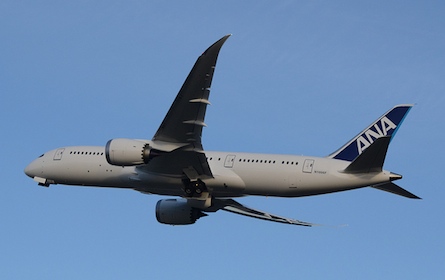Boeing has completed the extended operations (ETOPS) test points portion of its 300h certification systems functionality and reliability (F&R) testing for the Boeing 787 programme.
"Now that our planned ETOPS testing is in the books, the team will spend the next few weeks finishing function & reliability (F&R) demonstrations that lead up to initial type certification of the 787 with Rolls-Royce Trent 1000 engines," said Boeing vice president of marketing Randy Tinseth.
As of test aircraft ZA001's visit to EAA AirVenture in Oshkosh, Wisconsin on 29 July, Boeing had completed "two-thirds" of F&R testing, said Dan Mooney, vice president of 787-8 development.
Airplane Nine, ZA102, a production conforming 787 for launch operator All Nippon Airways (ANA), is being tasked with the ETOPS/F&R trials which first began on 26 June.
Many of the ETOPS trials included shutting down one of the two Trent 1000 engines for 345min before landing and simulating a single engine diversion up to the 330min ETOPS requirement.
Mooney said that during the extended single engine operations, crews would restart the shut down engine for landing, but fly at idle power and disconnect its power distributing generators to accurately simulate the aircraft behaviour in the event of an engine shutdown.

The 787 will initially be certified up to a 180min ETOPS requirement, allowing the aircraft to fly three hours from a suitable diversion airport, with a 330min certification to follow in early 2012 ahead of delivery to United Airlines for its Houston to Auckland route.
The second phase of ETOPS approval was necessitated by the FAA which required a software change for displaying low fuel quantity.
ZA102 capped its ETOPS trials with a 27 July maximum endurance flight that lasted 18h 7min, the longest in the programme's history, flying from Guam to Hawaii and across the western United States before turning back east over Washington state for a return to Paine Field at the company's Everett, Washington facility.
Boeing expects to achieve 787 type certification in late-August, with first delivery to ANA to follow by the end of September.
Source: Air Transport Intelligence news























